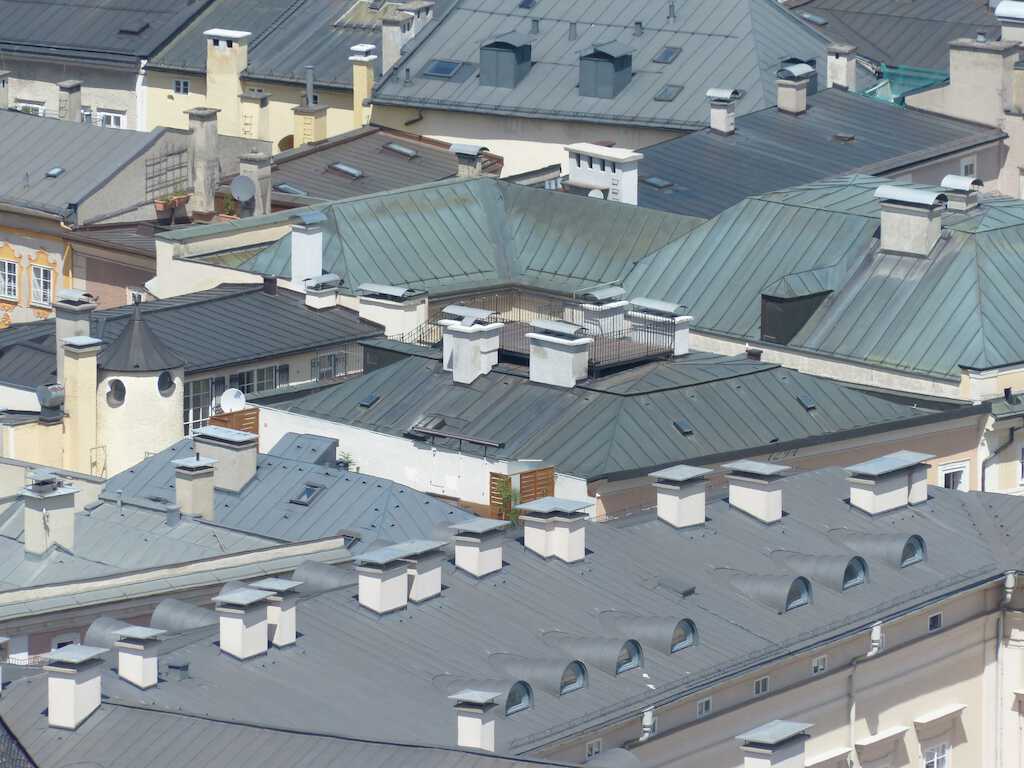By 2025 the United States roofing market is expected to reach 17 million dollars. When we think of roofing, many of us picture traditional residential homes with pitched roofs, but commercial roofing is also crucial to the industry.
If you’re wondering how commercial roofing differs from residential roofing, there are several things that set them apart. In this article, we’ll explain these differences.
What Classifies as a Commercial Vs. Residential?
Commercial buildings are any buildings where a commercial activity takes place. They include a variety of building styles housing restaurants, warehouses, hotels, offices, retail spaces, and more.
Residential buildings are homes that serve as private living spaces. They can be single-family homes, apartment buildings, mobile homes, or townhomes.
Materials
Both commercial and residential roofs often use shingles, underlaying, flashing, sheathing, and tar paper in their construction. The quality of materials for commercial roofing is often better than residential materials because they need to cover a larger area, support large units, and last a long time.
Because commercial roofs are designed for function, they are usually flat and don’t have as many material options. The materials used for commercial buildings are tar and gravel, single-ply coverings, acrylic, metal, EPDM, bitumen, or PVC.
The most common material in residential roofs is asphalt shingles, but ceramic, metal panels, slate, tile, and wood shakes are other materials common in home roofing.
Design
The most noticeable difference between residential and commercial roofs is their design. Commercial roofs are more practical and have flat or low-sloped roofs. This design allows them to be more load-bearing than residential homes to withstand the elements and heavy machinery and provide easy access for workers.
Many residential roofs are pitched, but the overall design comes down to the homeowner. Homes don’t have to be as practical as commercial buildings, so owners are free to make more stylistic choices.
Size
While homes come in plenty of sizes, the size difference between roofs is not an extreme difference. Commercial buildings, however, have larger square footage and need a roof that supports the larger shape and structure.
Commercial buildings like warehouses often cover millions of square footage. This is another reason you’ll find flat roofs on these types of buildings. It is more cost and time-effective for buildings of this scale.
Cost
The cost of commercial roofing is more expensive than residential. The cost of roofing on a residential home varies depending on the quality of materials chosen by the homeowner.
The size of residential buildings is one of the major factors affecting the cost because it calls for more materials and manpower to install. In addition to size, they also require specialized laborers, protective equipment, and tools that add to the expenses.
Installation
Installing a roof on a residential home is a standard roofing process for qualified roofing professionals. With commercial roofers, expert roofing contractors are a must.
On commercial buildings, the roofs must meet added safety requirements, house industrial-sized equipment, withstand heavy loads, work around piping, meet strict timelines and stand up against the elements. Because of these added demands, a large team of specialized laborers is on the job to help with installation.
Maintenance
Commercial and residential roofs require the same regular maintenance, although, with commercial buildings, it may take more time to complete. The following tasks allow you to keep up with roof maintenance.
Keep It Clean
Keeping your roof clean is one of the best ways to maintain the life of your roof. The build-up of debris creates clogs, backs up your gutters or drains and, leads to water damage, and encourages algae growth.
Clear Excess Snow
Excess snow and ice add extra weight to your roof that causes damage. After a heavy snowfall, your roof may experience leaks, ice dams, and other issues if not addressed.
Regular Inspections
You should inspect your roof for issues regularly. In the instance of a storm, heavy rain, or snow, you’ll want to check for damage as soon as possible to prevent any minor issues from developing into larger ones.
For commercial buildings, or if you aren’t comfortable checking at home, hire a professional roofing contractor to inspect your roof twice a year. By being proactive with inspections, you’re more likely to detect problems early before major damage occurs.
Fix Problems Right Away
If you do discover a problem, don’t put it aside for another day. Even if the issue appears small, many problems with roofs can develop into something that may cause damage to other parts of your building.
Call a professional the second you notice signs of trouble to prevent expensive, long-term damage.
Schedule Professional Maintenance Services
Roof maintenance is a big task and often calls for professional maintenance services. Commercial roofing services, in particular, must cover a larger surface area and perform specialized tasks to keep everything running smoothly.
Signs You Need Roofing Services or Replacement
Unsure if you need roofing services? There are several signs that it may be time to call a professional:
- Age of the roof
- Blistering
- Leaks
- Damaged shingles
- Higher energy bills
- Sagging
- Open seams
If you notice any of these issues, hire a skilled roofer to inspect the damage and determine the next course of action. In minor cases, a simple repair might be all that’s needed, while a total replacement might be the only solution for more severe problems.
Get the Job Done Right With Commercial Roofing Services
When working with a commercial building, an extra level of skill and care is needed to get the job done right. At Mid-State Construction and Roofing Services, we offer commercial roofing services, roof installation, repair, maintenance, and replacement.
Contact us for your free assessment today.

